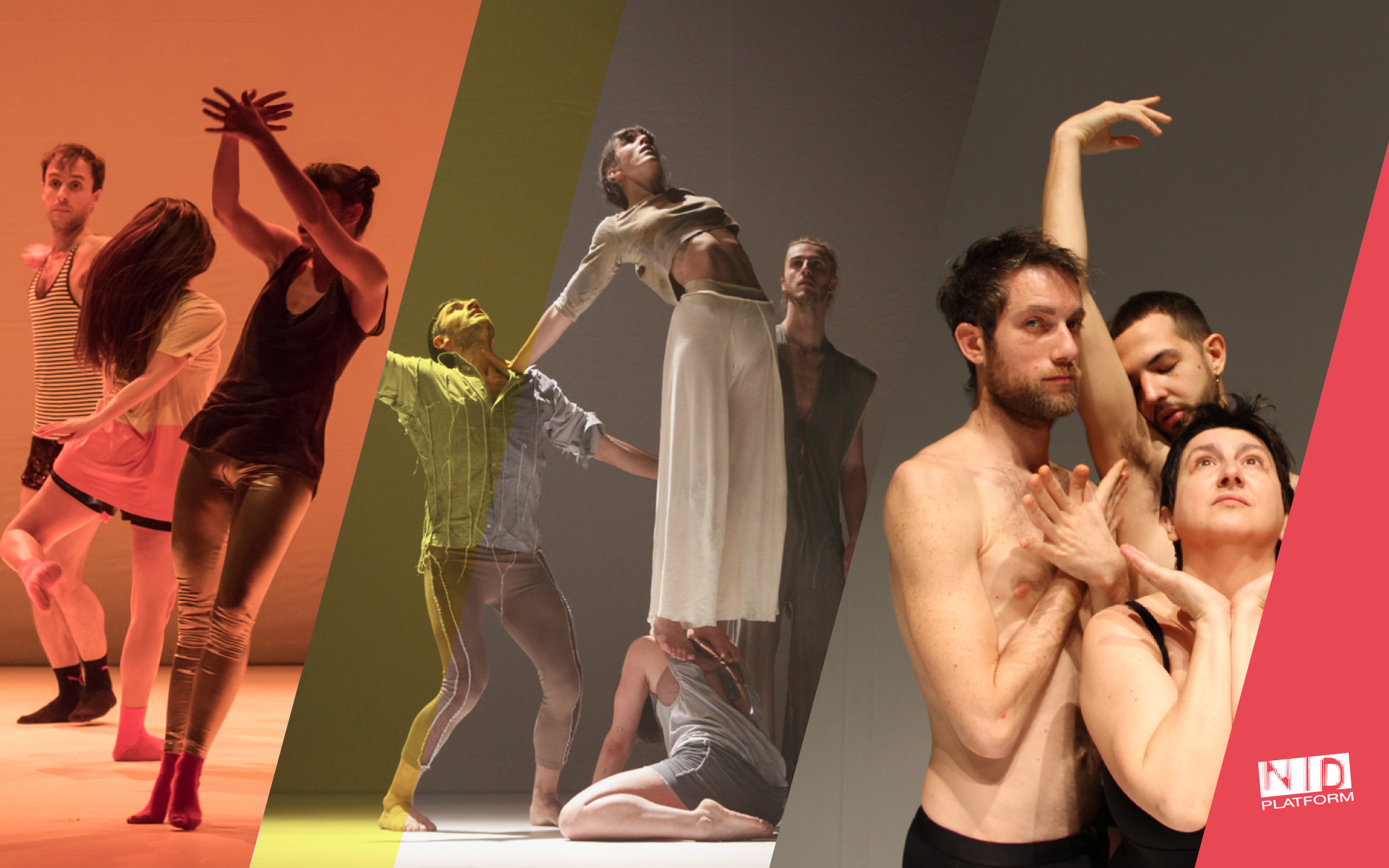«The body stratifies wisely». Conversation with Marta Bevilacqua
Le quattro stagioni (The four seasons) – From summer to autumn is a co-created performance by you and Roberto Cocconi. How was it to work in couple and how did you carry out your creative work?
It just came out natural. Roberto and I have worked side to side for many years, and we put our aesthetics together and create a shared balance. We have with us a permanent core team composed by Valentina Saggin, Luca Zampar e Anna Savanelli. Arearea is an ensemble.
For Le quattro stagioni_From summer to autumn we studied separately: I worked on summer and winter and Roberto on spring and autumn. The study of the music was the most effective part in terms of production of images: our work is based on visions, most of all environmental visions. So strong wind for me, dry leaves for him; abandonment and resistance for me, nostalgia and fall for him. And then the encounter between these two states, the two inner seasons (and outer, of course). Trusting in dance, in the coherent and debunking gesture which reconnects us to the Earth. Starting in February 2018 we will continue with the concerts Inverno (winter) and Primavera (spring).
You perform with other three female dancers L’Estate (summer), whereas Roberto Cocconi performs with other three male dancers L’Autunno (autumn): the feminine and the masculine component are thus crucial. Can you tell us something more about this?
Le Quattro Stagioni are a big metaphore, a transport. We want to take the audience into the big themes: nature, love, conflict, the passing of time. Vivaldi’s Estate (summer) bgins with a storm…I couldn’t resist challenging it. And the peace it gives afterwards belongs to a non-stereotyped, sensual and complex feminine, which I am interested in investigating. L’Autunno (autumn) opens up with an irony that brings to hunting, to a playful and jokey space and time. And it is here that the theatrics of Arearea comes out in full force. We thoroughly enjoy observing ourselves even at reharsals, it is touching indeed for us. We are these times. Amongst the readings that guided us in the search for our intents, there is above all Albert Camus, Summer and other solar essays, which I believe should be present in the bookshelf every household.
The questioning of usual spaces and the double dimension of the stage show and of the urban performance is the design signature of Arearea. This performance started out in its urban version, and then it moved on to the stage: how did the work change in the switch from one space to the other?
Such a transition is far from authomatic. In fact, urban dance has a very specific significance which cannot be transferred to theatre without due reflection and forethought. The project Le Quattro Stagioni has had a version where the bodies were integrated into nature: earth, grass (mud, sometimes). And the performance grew in the reruns. The aim was that of taking to the extreme a diffucult and technical choreographic material. And have it meet with real nature. Only afterwards came the theatre, the natured nature. But how do you restore nature where there is no natural environment? We were lost. We did not proceed for weeks. I couldn’t see anything of the poetry we had reached any longer. So we got rid of everything, the theatre wings, the costumes…ten dancers, an empty setting and light. And so the music reappeared on the bodies, and the bodies were able to tell their nature again. The body stratifies wisely.
The music is that of Vivaldi’s Four Seasons, in the contemporary rewrite by Max Richter. Why did you choose this rewrite? Did Richter’s mediation, which you mention in the description of your performance, help you in approaching Vivaldi’s work?
Roberto came up with this idea and had me listen to the concerts. I was scared. That was too diffucult for me. The Four Seasons are very well known. Then, as it is often the case, we listened to our hearts and understood that we often don’t know at all the things we think we know (and this is true of all classics). Richter’s rewrite encouraged us to take a risk. We needed to portray ourselves through that new music.
What do you expect from the 2017 edition of NID Platform?
We expect a feast of dance genres, preformances that can give testimony to Italian research and open up new perspectives for the future. We expect to meet new people, and live an atmosphere of genuine curiosity. We are looking forward to NID in order to confront and prove ourselves. We can’t wait for it and are impatient!
Marta Bevilacqua
Marta Bevilacqua si forma all’Accademia Isola Danza a Venezia con Carolyn Carlson (2001). Collabora stabilmente con la compagnia Arearea dal 1998. Tra le sue coreografie più premiate NEC NEC (Anticorpi Explò), ORGANON (Premio Equilibrio), INNESTI, RUEDIS. Ha danzato con compagnie di ricerca come Adarte, Aldes, Balletto Civile, Ersilia Danza, Naturalis Labor, TPO, Versilia Danza. È̀ stata coinvolta nei seguenti progetti internazionali: Lieux Publics con DAFNE, Writing site by site con PANTA REI e OLTRE LA LUNA, prodotto da Dance Channels.
Marta Bevilacqua
Marta Bevilacqua trained at the Accademia Isola Danza in Venice with Carolyn Carlson (2001). She has been continuously working with the company Arearea since 1998. Among her most rewarded works there are NEC NEC (Anticorpi Explò), ORGANON (Premio Equilibrio), GRAFTS, RUEDIS. She danced with experimental companies such as Adarte, Aldes, Balletto Civile, Ersilia Danza, Naturalis Labor, TPO, Versilia Danza. She took part to international projects such as Lieux Publics with DAFNE, Writing site by site with PANTA REI. Her project OVER THE MOON was produced by Dance Channels.
